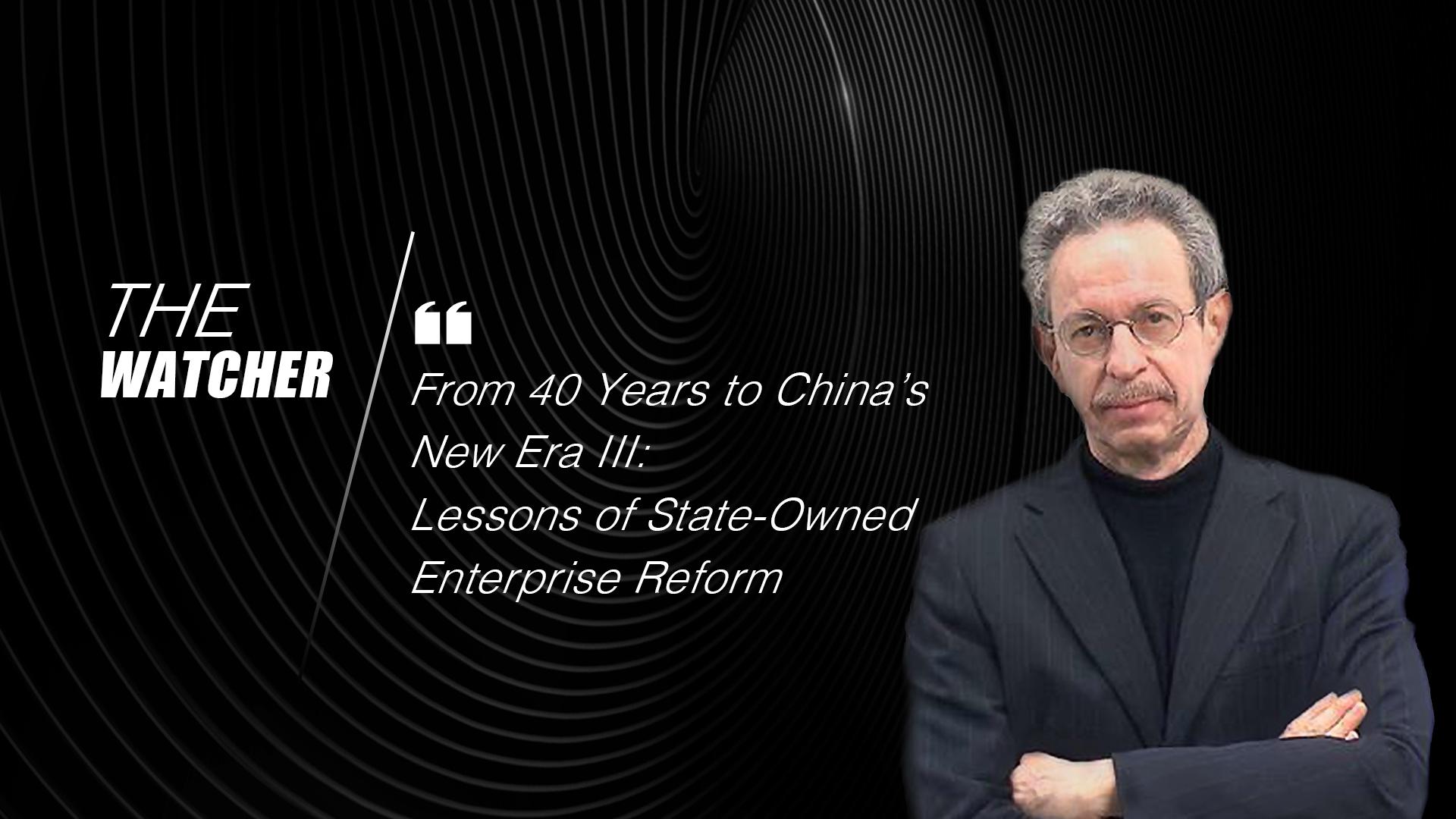
Opinions
16:41, 17-Nov-2018
From 40 Years to China’s New Era III: Lessons of state-owned enterprise reform
Updated
16:41, 02-Jan-2019
Robert L. Kuhn
03:55

In this 40th year of China's reform and opening-up, the history of reforms of state-owned enterprises (SOEs) is a critical factor of China's economic miracle. What lessons were learned?
During the era of central planning, SOEs were the foundation of China's industrial economy, then became loss-making vehicles for maintaining employment and social stability. When reform began, all enterprises in China were state-owned, all prices of goods were set by the government, and all distribution of goods was controlled by the government.
But as reform progressed, the government's role in the economy gradually diminished, giving way to the market, including the operations of SOEs. Indeed, SOE reform accelerated China's economic transition. There were waves of SOE reforms. "Keep the large, let go of the small" has been an SOE guiding principle for over two decades.
The number of SOEs declined from over 150,000 in 1998 to about 37,500 in 2017. The number of large, centrally controlled SOEs has been reduced steadily, from over 1,000 in the 1990s to under 100 today. In the process, and by design, the surviving SOEs have become massive and powerful, the result of both managerial reform and merger and acquisition growth.
When reform began, there were no Chinese companies in the Fortune Global 500 — zero. In 2017, there were 109, over 20 percent of the world's total, including three of the top 10, almost all of them SOEs. However, the Fortune metric is revenues, and no consideration is given to classic tests of productivity or efficiency, like return on sales, assets or equity.
In fact, of the 98 Chinese companies on the Fortune Global list in 2015, 12 were losing money. Since 1978, China has become a laboratory for reform, a pioneer in the long process of transforming a planned economy, in which the state was supposed to own all the means of production, into a market economy, in which mixed ownership features a vibrant private sector.
China's economic success, in no small measure, can be attributed to a series of strategies: setting visionary goals; experimentation that allows local, bottom-up innovation and variation; reassessment that includes a willingness to make changes; and the institutionalization of central, top-down policies based on experience.
While rural reform began about 40 years ago, it was about 30 years ago that new ownership rights in state-owned factories injected vitality into industry, triggering the country's high-speed economic growth. But to maintain economic momentum today, to increase innovation and productivity, new SOE reforms are needed: surely in management, likely in ownership, possibly in control.
There have been twists and turns in SOE reform — we've not likely seen the last of change and debates are rarely placid. Let no one call SOE reform complete.
(If you want to contribute and have specific expertise, please contact us at opinions@cgtn.com)

SITEMAP
Copyright © 2018 CGTN. Beijing ICP prepared NO.16065310-3
Copyright © 2018 CGTN. Beijing ICP prepared NO.16065310-3